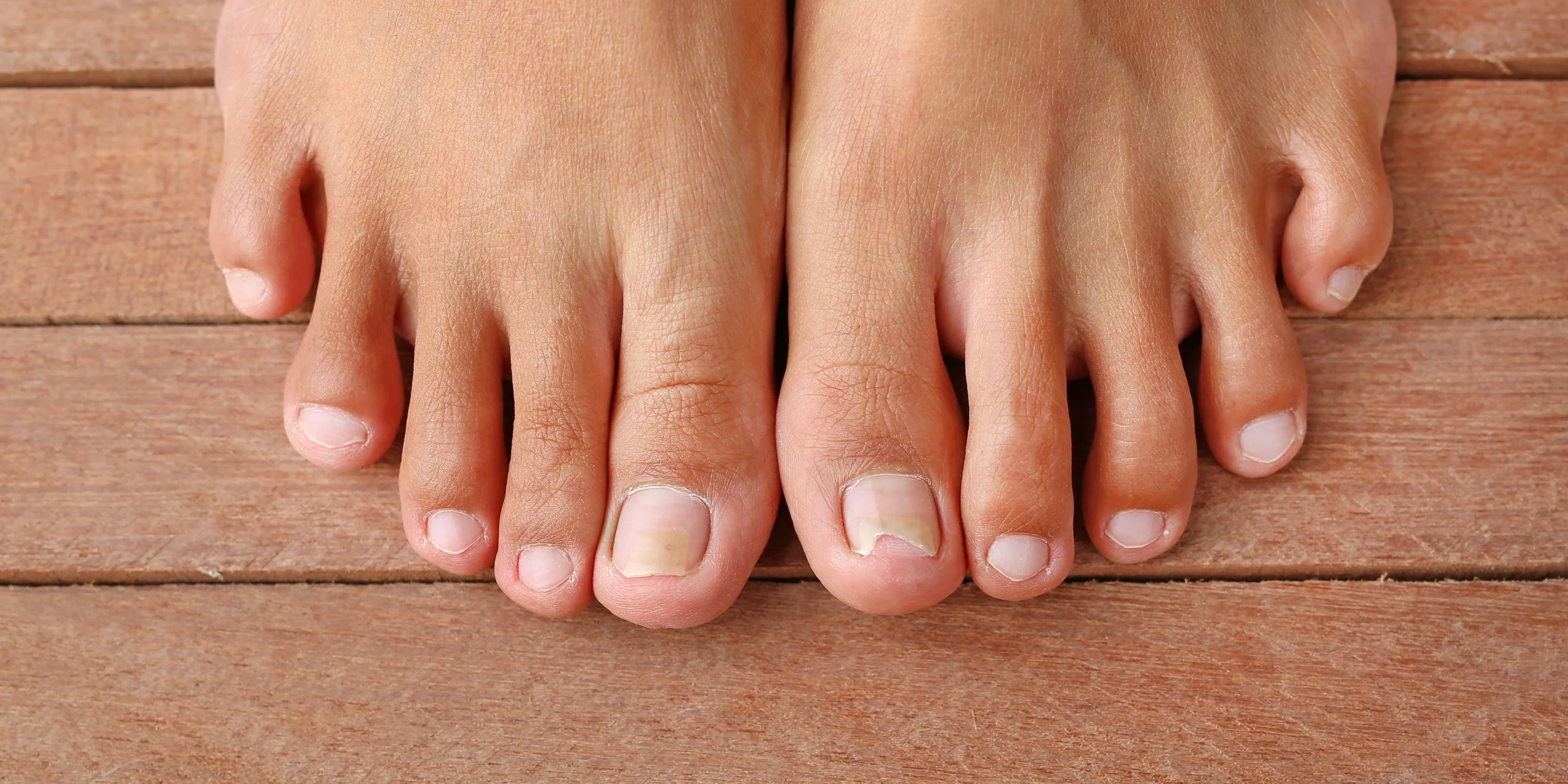Understanding Toenail Fungus: What Toenail Fungus Looks Like?
Are your toes feeling less than confident these days? If you've noticed a change in the appearance of your toenails, there's a chance you could be dealing with a common and often persistent problem: toenail fungus. This bothersome condition can affect anyone, causing nails to become discolored, thickened, and brittle.
What Does Toenail Fungus Look Like?
Toenail fungus, also known as onychomycosis, affects the toenails and is caused by dermatophytes, a group of fungi that thrive in warm, moist environments. These fungi penetrate and live underneath the nail, leading to several distinct visual cues:
Discoloration: Infected nails often appear yellow, white, brown, or black, starting at the tip and spreading.
Thickened Nails: Nails may become thickened and difficult to trim as the infection progresses.
Brittle Texture: Infected nails tend to be brittle, crumbly, and prone to breaking.
Distorted Shape: The shape of the nail may change, developing ridges, pits, or a warped appearance.
Nail Bed Separation: Severe cases can cause the nail to lift or separate from the nail bed.
Recognizing these visual cues early can help in seeking prompt treatment and preventing the infection from worsening
Causes of Toenail Fungus
Toenail fungus thrives in warm, moist environments and is primarily caused by dermatophyte fungi. Here are the key causes:
Common Causes
Exposure to Fungi: Walking barefoot in public places like pools, gyms, and showers.
Poor Foot Hygiene: Not drying feet thoroughly after bathing or sweating.
Footwear: Tight-fitting, non-breathable shoes trap moisture, creating an ideal environment for fungi.
Common Fungi
Trichophyton rubrum: The most common fungus responsible for toenail infections.
Candida: A yeast that can cause toenail fungus, especially in those with compromised immune systems.
Aspergillus: A less common mold that can also cause infections.
Routes of Infection
Direct Contact: Contracting the fungus from contaminated surfaces in public showers, pools, and locker rooms.
Shared Personal Items: Spreading the fungus through shared towels, socks, or nail clippers.
Toe-to-Toe Spread: The infection can easily spread from one toenail to another.
Risk Factors
Poor Circulation: Reduced blood flow to the feet increases susceptibility.
Weakened Immune System: Individuals with weakened immunity are more prone to infections.
Underlying Conditions: Conditions like diabetes or peripheral arterial disease elevate the risk.
Maintaining good foot hygiene, choosing breathable footwear, and being cautious in communal areas can help prevent toenail fungus. If you suspect an infection, consult a healthcare professional for proper diagnosis and treatment.
Treatment Options for Toenail Fungus
Toenail fungus can be persistent, but several effective treatment options are available. The choice depends on the infection's severity, the patient's health, and preferences.
Topical Antifungal Treatments: Topical treatments are used for mild to moderate cases and are applied directly to the nail and surrounding skin.
Oral Antifungal Medications: For severe or persistent cases, oral medications are often prescribed as they work from within the body.
Laser or Light-Based Therapies: These treatments use concentrated light or laser energy to destroy the fungus and promote healthy nail growth.
Surgical Removal of the Nail: In severe cases, the infected nail may be surgically removed to eliminate the fungus completely.
Combination Therapies: Healthcare providers may recommend combining treatments, such as using both topical and oral antifungals, or adding laser therapy.
Key Points
Persistence: Toenail fungus may require multiple rounds of treatment.
Adherence: Following the treatment plan is crucial for success.
Consult a podiatrist for proper diagnosis and personalized treatment if you suspect toenail fungus.
Prevention Tips for Toenail Fungus
Preventing toenail fungus involves simple hygiene practices and lifestyle adjustments to maintain good foot health and avoid risk factors.
Keep Feet Clean and Dry: Wash feet daily, especially between the toes, and dry them thoroughly to prevent moisture buildup.
Choose Proper Footwear: Opt for breathable shoes and moisture-wicking socks to keep feet dry.
Use Antifungal Products: Apply antifungal powders or sprays to feet and inside shoes, especially in communal areas like gyms and pools.
Avoid Walking Barefoot in Public Areas: Wear flip-flops or sandals in public showers, swimming pools, and locker rooms to prevent contact with contaminated surfaces.
Trim Nails Properly: Keep toenails trimmed and filed to prevent debris and moisture buildup under the nails.
Disinfect Personal Care Items: Avoid sharing personal items like towels, socks, or nail clippers. Disinfect these items regularly to prevent the spread of fungus.
Manage Underlying Medical Conditions: Work with healthcare providers to manage conditions like diabetes or peripheral arterial disease that weaken the immune system or impair circulation.
Maintain Good Overall Foot Health: Keep feet healthy, moisturized, and free from injury. Wear well-fitting, breathable shoes and address any foot issues promptly.
By incorporating these preventive measures into your daily routine, you can significantly reduce the chances of developing toenail fungus and maintain healthy, attractive feet.
FAQ about Toenail Fungus
Q: Can toenail fungus go away on its own?
A: It's unlikely. Toenail fungus typically requires treatment to fully resolve. Without intervention, it can persist and worsen over time.
Q: How long does toenail fungus treatment take?
A: Treatment duration varies. Mild cases may improve with topical treatments in a few months, while severe cases or infections may require several months of oral antifungal medication.
Q: Are there home remedies for toenail fungus?
A: Some people try home remedies like tea tree oil or vinegar soaks. While these may help mild cases, they're often not as effective as prescribed antifungal treatments for more severe infections.
Q: Should I see a doctor for toenail fungus?
A: Yes, especially if you have diabetes or a weakened immune system, or if the infection doesn't improve with over-the-counter treatments. A healthcare provider can provide a proper diagnosis and recommend appropriate treatment.
Q: How can I prevent toenail fungus from coming back?
A: Maintain good foot hygiene, wear breathable footwear, avoid sharing personal items like socks or nail clippers, and treat any fungal infections promptly to prevent recurrence.
Conclusion
By understanding the signs, causes, and treatment options for toenail fungus, you can take proactive steps to manage and prevent this common infection. If you suspect toenail fungus or have persistent symptoms, consult a podiatrist for personalized advice and treatment. With proper care, you can promote the health of your feet and reduce the risk of fungal infections in the future.











